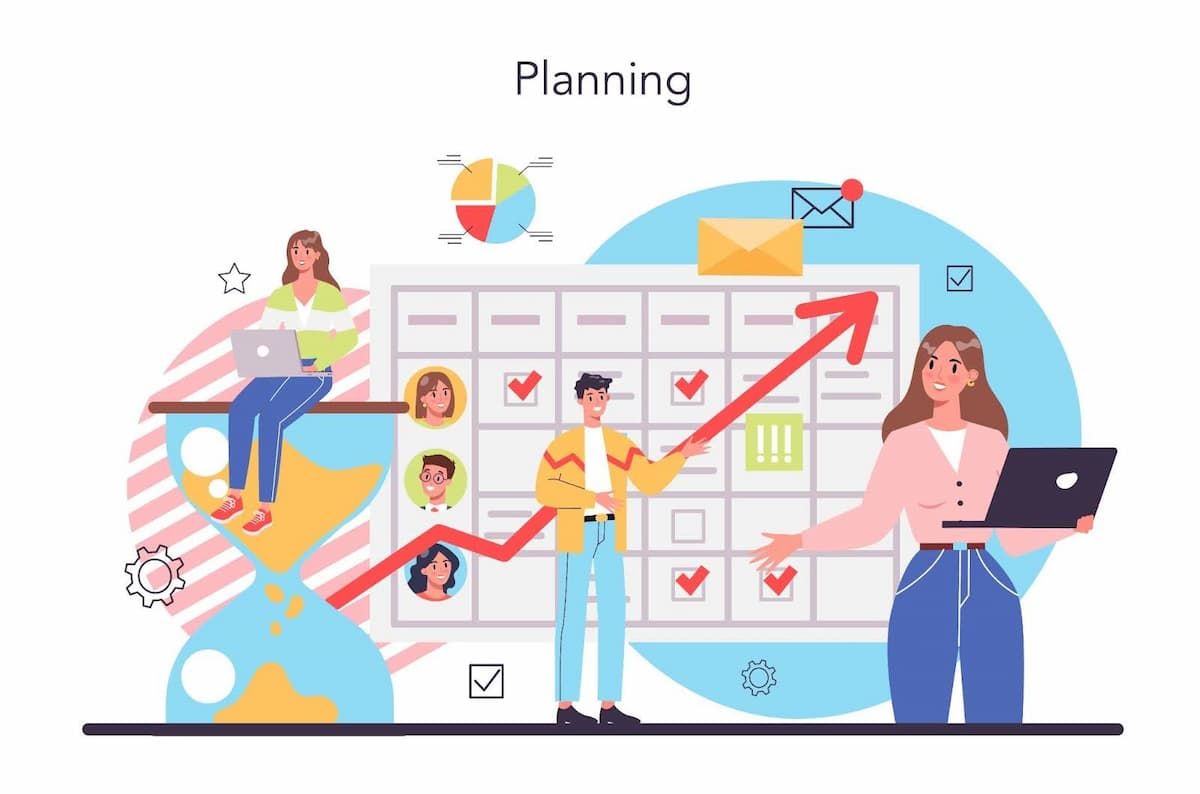Rolling Cash Flow
Rolling Cash Flow Explained: Why It Matters & How to Use It

Understanding what is a rolling forecast is essential in financial planning, where figures tend to become outdated within just a few months. The rolling forecast does not represent a fixed report, but is a dynamic model that changes with every period to maintain up-to-date projections.
By increasing visibility and identifying risks earlier, rolling forecasts enable CFOs, founders, and finance teams to gain greater control and confidence in markets as they evolve.
What Is Rolling Cash Flow (“Rolling Forecast”)?
The rolling forecast is a future-driven financial model with no expiration date. The planning horizon remains up to date because when one month or quarter elapses, another is appended to it. This framework provides leadership with a live view of financial performance, rather than a snapshot that expires rapidly.
The definition of a rolling forecast is straightforward: it is a planning system that stays current by regularly adding new data. Instead of producing a one-time snapshot, businesses maintain a live, evolving projection.
For example, a clothing store is entering the holiday season. In December, sales surge, and by February, the store is oversold. A rolling forecast enables leadership to identify this trend as it occurs and adjust the cash flow plans before money becomes trapped in unsold inventory.
Static vs Rolling Forecast - Key Differences Explained
Static forecasts are established at the start of a fiscal year and are rarely revisited. The problem is that real-world conditions seldom stay the same. By contrast, rolling cash flow forecasting maintains model accuracy through ongoing updates, enabling businesses to adjust to changes as they occur.
The rolling forecast formula utilizes assumptions and historical data regarding revenue, expenditures, and market prospects. At each period, the results are replaced with projections, and a new forecasted period is added. To compare static vs rolling forecast models, we should consider the responsiveness of each model to uncertainty and change.
| Feature | Static Forecast | Rolling Forecast |
|---|---|---|
| Update Frequency | Annual | Monthly or Quarterly |
| Adaptability to change | Limited | Flexible |
| Use Case | Budget Planning | Dynamic |
Forecast Length and Frequency
A rolling forecast is a formula that typically spans 12 months, although it can be extended to 18 or 24 months, depending on industry requirements. A retail chain may have a 2-year rolling forecast to consider seasonal inventory fluctuations. It has a more extended horizon, allowing for more effective procurement and financing planning.
Adaptability to Business Shifts
This is where a scenario rolling forecast becomes essential. It assists organizations in planning towards a variety of potential eventualities, making financial plans more robust. A manufacturer can simulate three versions of the future, including scenarios with constant sales, a precipitous decline in demand, or a skyrocketing cost of raw materials. This helps leadership see exactly how each scenario affects cash reserves before making big decisions.
Resource and Maintenance Load
A rolling cash flow forecast requires regular updates and attention from finance teams. Although it requires more effort than a static budget, a rolling cash flow forecast offers greater accuracy and faster responses to change.
Benefits of Using Rolling Cash Flow

Rolling cash flow strengthens control and adaptability - Freepik
The rolling forecast’s meaning goes beyond prediction — it’s about responsiveness. Teams use it to stay proactive instead of reactive, anticipating shifts before they happen. The benefits of rolling forecast models go beyond accuracy. They help teams adapt to change and strengthen financial control.
- Immediate visibility into funding gaps: Professional services firms anticipate staffing gaps months ahead and adjust their hiring or resourcing accordingly. This ensures rolling cash flow remains steady.
- Agility in responding to shifts: Healthcare providers recalibrate budgets quickly when patient volumes fluctuate and allocate resources efficiently without compromising liquidity.
- Alignment of operations with financial goals: Manufacturers adjust production in response to rising commodity prices. Retailers realign mid-season marketing to match demand, using current numbers.
The rolling forecast’s meaning in practice is agility, providing continuous updates that help businesses see risks early and act before they escalate. These rolling cash flow benefits extend across industries, improving both foresight and response.
What Should a Rolling Cash Flow Model Include?
A comprehensive rolling cash flow model ensures no financial component is overlooked. A predictive cash flow structure generally includes inflows, expenses, and obligations.
Revenue Inflows
The rolling financial forecast considers sales revenue, recurring contracts, and other factors. The revenue assumptions, which are frequently revised, would help the teams detect trends and provide a response to their strategies.
Operating Expenses
From time to time, operating expenses, including wages, promotion, and expense allowances, are to be posted as fluctuating. Flexible liquidity planning will help businesses implement the necessary changes to adopt both upward and downward strategies, enabling them to stay afloat during turbulent times.
Tax and Debt Outflows
Debts like taxes and loans are important. The financial forecasting tool ensures that repayment schedules are considered in future projects, thereby minimizing the likelihood of liquidity crises.
Building a Rolling Forecast from Scratch

Step-by-step forecasting builds an evolving financial model - Freepik
A rolling forecast requires a disciplined process to be repeated regularly. One step depends on another, so you can be sure that the model will improve as your business evolves.
Step 1. Define the horizon
Select focused visibility of 12 months. Long-cycle industries, such as building, may require as long as 18 or 24 months for strategic planning.
Step 2. Collect historical data
Use historical trends of revenue, expenditure, and seasonal changes to establish the forecasting base. SaaS companies are concerned with churn and acquisition rates, whereas retailers focus on seasonal sales.
Step 3. Input assumptions
Predictions to represent future trends should include forward-looking factors, such as growth rates, price adjustments, or supplier contracts. Such assumptions enable leadership to anticipate probable events, rather than relying solely on past experiences.
Step 4. Update with actuals
Regularly incorporate actual results to keep the forecast aligned with current conditions.
Step 5. Extend the model
As each month or quarter closes, add a new one to maintain a continuous planning horizon. This is what makes the model “rolling.”
Step 6. Run a scenario rolling forecast
Test multiple scenarios. A SaaS startup may compare steady growth with delayed renewals. A retailer might build models for both strong and weak holiday seasons.
This structure transforms forecasting into an ongoing management tool rather than a one-time budgeting exercise.
Forecast with clarity
Try financial projectionsBest Practices for Creating Rolling Cash Flow
A rolling cash forecasting model is only as strong as the discipline behind it. To make it reliable:
- Automate inputs: Manual spreadsheets create errors and slow updates. Tools that integrate with accounting platforms reduce risk and save time.
- Benchmark assumptions: Internal benchmarks rely on past company data, while external ones reference industry standards. Both keep expectations realistic.
- Review monthly: In unpredictable markets, it is not possible to negotiate over periods other than monthly. Ignoring them might cause leadership to act on stale data, leading to poor decisions and unexpected cash shortages.
- Stay flexible: Business environments change quickly. If sales fall behind or expenses rise, assumptions must be updated immediately.
Teams that treat these practices as habits build models that stay relevant, accurate, and actionable. Regular cash flow forecasting provides the necessary discipline to maintain trust in the accuracy of the results.
Anticipate outcomes before they happen
Test scenario toolsWhen to Use Rolling Cash Flow Over Static Forecasts
A common question leaders ask “What is a rolling forecast in finance?”, particularly when considering it in relation to static models.
Rolling forecasts are particularly effective in environments that undergo rapid change. Technology companies depend on them to track subscription revenue and churn. Retailers use them to manage seasonal demand. Manufacturers rely on them to handle supply chain costs and commodity fluctuations.
Static forecasts still serve stable industries. Nonprofits or government organizations with predictable funding cycles often find static methods sufficient. For growth-focused businesses, however, rolling forecasts offer the adaptability needed to plan confidently.
Build for lean teams and operations
See tools for small businessesTools That Make Rolling Cash Flow Easier

Software tools automate rolling forecasts for accuracy and efficiency - Freepik
Manual updates consume valuable time. Modern cash flow software simplifies the process.
An example of this is Cash Flow Frog, which is integrated with accounting applications QuickBooks and Xero. It automatically updates actuals, horizon forecasts, and aids scenario testing. These features help to get rid of the manual spreadsheet load and enable the finance person to concentrate on analysis.
More than efficiency, automation can provide. It enhances the accuracy of the data, harmonizes the teams, and facilitates clear-cut decision-making across the business. For leaders of finance, this translates into increased trust in rolling forecasts and a decreased risk of expensive mistakes.
Common Mistakes in Rolling Forecasting
Even with strong systems in place, certain mistakes can quickly reduce the value of a rolling forecast. Here are the most frequent pitfalls to watch out for:
| Mistake | Why It Hurts | Impact on Business |
|---|---|---|
| Updating too infrequently | Updating only once a quarter leaves forecasts outdated in fast-moving industries | Misleads decision-makers and creates financial blind spots. |
| Using unrealistic assumptions | Overly optimistic revenue or underestimated costs give a false sense of confidence. | Leads to overcommitment, financial stress, and liquidity shortfalls. |
| Ignoring external events | Market shifts such as inflation, regulation changes, or disruptions are left out. | Forecasts lose relevance and fail to guide timely responses. |
| Treating rolling forecasts as optional | Some businesses build models but neglect regular updates. | Forecasts lose value, mirroring the weaknesses of static models. |
Rolling Forecast and Strategic Financial Planning
The meaning of the rolling forecast extends beyond short-term management. It is a tool for aligning financial operations with long-term strategic objectives.
Organizations tie liquidity planning with greater objectives by incorporating a financial forecasting tool with rolling models. For instance, an acquiring firm can assess its ability to finance itself without disrupting its business operations.
When companies opt to venture abroad, they can model the influence of headcount, infrastructure expenses, and currency fluctuations to make informed decisions.
A rolling forecast also supports agile planning, which involves continuously monitoring key financial ratios. Some of the key metrics that can be tested in various situations include EBITDA, working capital, liquidity coverage, and debt-to-equity ratios. It enables leadership to become more accurate in balancing risk and reward before committing to the strategy.
Rolling forecasts offer transparency to boards and other stakeholders. They do not receive the projections displayed in a stagnant manner at the year level, but rather observe the interactions of initiatives with existing realities. It brings more knowledge-based discussion on capital allocation and long-term planning.
Final Thoughts
Rolling cash flow models enable businesses to plan ahead with greater clarity. With continuous updates, companies stay agile and confident in their financial decisions. For decision-makers navigating volatility, understanding what is a rolling forecast highlights why adopting rolling models is no longer optional.
Platforms like Cash Flow Frog offer automation, accuracy, and scenario testing, reducing manual effort and enabling smarter planning. Explore how these tools can help your business manage liquidity with confidence and clarity.
Stay ahead of cash flow gaps
Start your free trial todayRelated Terms
FAQ
Looking for more help?
Visit our help center to find answers to your questions about CashFlowFrog.
Trusted by thousands of business owners
Start Free Trial Now